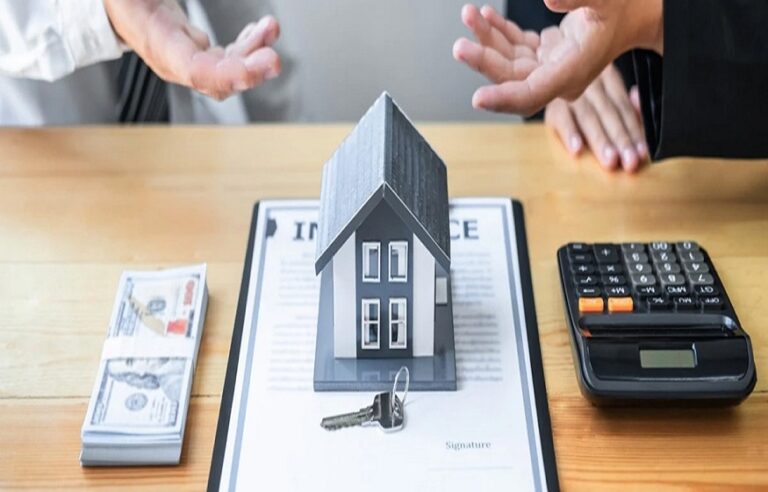Selling a property involves far more than simply accepting an offer and handing over keys. The legal process that follows, conveyancing requires careful navigation to ensure a smooth transaction and successful completion. Whilst buyers often receive extensive guidance about their conveyancing obligations, sellers sometimes approach the process with less preparation, assuming their responsibilities are minimal once an offer is accepted.
This assumption can prove costly. Sellers who understand their role in the conveyancing process and prepare accordingly typically experience faster completions, fewer complications, and better outcomes overall. Working with an experienced residential property conveyancer provides essential legal expertise, but your own proactive engagement significantly influences how smoothly conveyancing for selling a house progresses. These practical tips help sellers navigate the process effectively, avoiding common pitfalls that can delay or even jeopardise sales.
Instruct Your Conveyancer Early
Don’t wait until you’ve accepted an offer to instruct a conveyancer. Engaging legal representation as soon as you decide to sell allows them to begin gathering essential documents and preparing the legal pack whilst your property is being marketed. This head start can reduce the time between offer acceptance and exchange by several weeks.
Early instruction also means your conveyancer can identify and resolve potential issues before they derail a sale. If title problems exist or essential documentation is missing, discovering this early allows time to address matters without the pressure of an impatient buyer threatening to withdraw.
When selecting your conveyancer, avoid choosing based purely on your estate agent’s recommendation or the lowest quote. Seek a conveyancer with strong local knowledge, proven experience, and transparent communication practices who can guide you through the process efficiently.
Gather Essential Documentation Proactively
Conveyancing requires substantial documentation, and gathering this information early prevents delays once your sale progresses. Essential documents include property title deeds, recent energy performance certificates, building regulation certificates for any work completed, guarantees for installations like windows or damp-proofing, and documentation of any planning permissions obtained.
For leasehold properties, you’ll need your lease, recent service charge accounts, buildings insurance details, and management company contact information. If you’ve made alterations to the property, extensions, conversions, or significant renovations compile all relevant permissions, certificates, and professional reports.
Create a comprehensive file containing utility bills, council tax statements, and any correspondence with neighbours about boundary matters or shared facilities. Having this information readily available when your conveyancer requests it prevents the frustrating delays that occur when sellers scramble to locate documents weeks into the transaction.
Complete the Property Information Form Thoroughly
The Property Information Form requires detailed disclosure about your property, covering everything from boundary disputes and alterations to drainage arrangements and parking rights. Completing this form thoroughly and honestly proves crucial to a smooth transaction.
Resist the temptation to provide minimal answers that simply avoid disclosure. Buyers’ conveyancers will investigate anyway, and incomplete information only generates follow-up enquiries that extend the process. If you’ve had even minor disputes with neighbours, disclose them fully. If you’re uncertain about drainage or boundary details, say so rather than guessing.
Remember that deliberate non-disclosure of material information can result in legal action after completion if buyers discover problems you failed to mention. Honesty, even when disclosing potentially concerning information, protects you legally and allows buyers to make informed decisions.
Address Mortgage Redemption Early
If you have an outstanding mortgage on the property, understanding the redemption process proves essential. Contact your lender early to request a redemption statement showing the exact amount required to repay the loan on your proposed completion date.
Some lenders require several weeks’ notice to provide redemption figures, and discovering this late in the process creates unnecessary delays. Additionally, some mortgages carry early repayment charges that significantly affect the net proceeds you’ll receive from the sale. Understanding these costs early allows realistic financial planning.
Provide your conveyancer with complete mortgage details, including your lender’s name, mortgage account number, and approximate outstanding balance. This enables them to contact the lender promptly and coordinate redemption as part of the completion process.
Be Transparent About Property Issues
If your property has known issues—damp problems, subsidence history, drainage concerns, or disputes with neighbours—disclose these upfront rather than hoping buyers won’t discover them. Experienced buyers’ conveyancers will uncover issues through searches, surveys, and enquiries, and late disclosure creates mistrust that can jeopardise sales.
Early, honest disclosure allows issues to be addressed constructively. You might negotiate a reduced price accounting for known problems, provide evidence of remedial work completed, or offer indemnity insurance for certain matters. These solutions work far better than defensive responses to enquiries about problems you initially failed to mention.
Respond Promptly to Enquiries
Once the buyer’s conveyancer receives your contract pack and search results, they’ll raise enquiries seeking clarification or additional information. The speed of your responses directly affects transaction timelines.
Treat enquiries as urgent priorities. Even if questions seem pedantic or unnecessary, answer them comprehensively and promptly. Your conveyancer may need to contact you for information to respond, so make yourself readily available and respond to their queries within 24 hours whenever possible.
Remember that in chains, delays cascade through all connected transactions. Your slow responses don’t just affect your sale—they impact everyone in the chain, potentially causing other sales to collapse and derailing your own onward purchase.
Maintain Flexibility on Completion Dates
Whilst you likely have a preferred completion date, maintaining some flexibility helps keep transactions moving. In chains particularly, accommodating other parties’ timing requirements can prevent collapses that would ultimately delay you far longer than the compromise requires.
Discuss your constraints honestly with your conveyancer if you need to complete by a certain date due to your own onward purchase or rental agreements, they can communicate this to the buyer’s conveyancer. However, being the party who accommodates others’ reasonable requests often builds goodwill that proves valuable if complications arise later.
Prepare for Exchange and Completion
As exchange approaches, ensure you understand exactly what will happen and what’s required from you. Your conveyancer will need you to sign the contract and return it promptly. They’ll also need confirmation of your completion date preference and details of where you want sale proceeds sent after completion.
Plan your moving arrangements carefully, coordinating with the completion date once it’s confirmed. Remember that completion typically occurs by 2pm on completion day, after which you must vacate the property and hand keys to the estate agent for release to the buyer.
Ensure all utilities, council tax, and service charges are settled up to the completion date. Notify relevant providers of your move and arrange for final meter readings on completion day. This administrative tidiness prevents disputes after completion and ensures clean breaks.
Understand Your Ongoing Obligations
Even after completion, certain obligations may continue. You must provide forwarding address details for redirecting mail. If you’ve given warranties about the property’s condition or works completed, understand these remain enforceable after sale.
For leasehold properties, inform the management company of the sale and provide new owner details. If you’ve paid service charges in advance, your conveyancer should recover the appropriate proportion from the buyer at completion, but verify this occurs.
Communicate Proactively With Your Conveyancer
Don’t wait for your conveyancer to chase you for information or updates. If circumstances change—you need to adjust the completion date, you’ve discovered information relevant to the sale, or you’re having difficulty gathering requested documents—inform them immediately.
Regular communication keeps your transaction progressing and allows your conveyancer to manage buyer expectations if delays become unavoidable. A brief weekly check-in requesting progress updates also ensures your sale remains prioritised.
Conclusion
Conveyancing for selling a house requires more than simply waiting for your conveyancer to handle everything. Proactive sellers who gather documentation early, respond promptly to enquiries, and maintain open communication with their conveyancer experience significantly smoother transactions than those who approach the process passively.
By understanding your role in the conveyancing process and engaging constructively with each stage, you help ensure your sale progresses efficiently toward successful completion. The combination of professional legal expertise from your residential property conveyancer and your own diligent preparation creates optimal conditions for a swift, stress-free sale that allows you to move forward with confidence.










+ There are no comments
Add yours